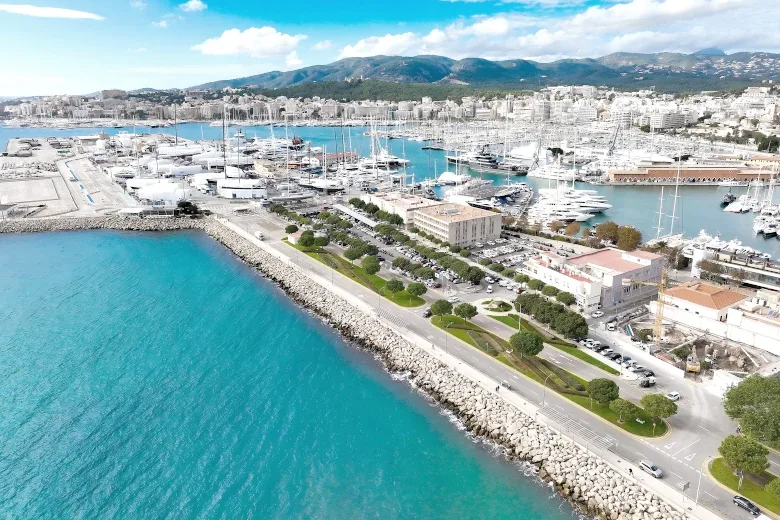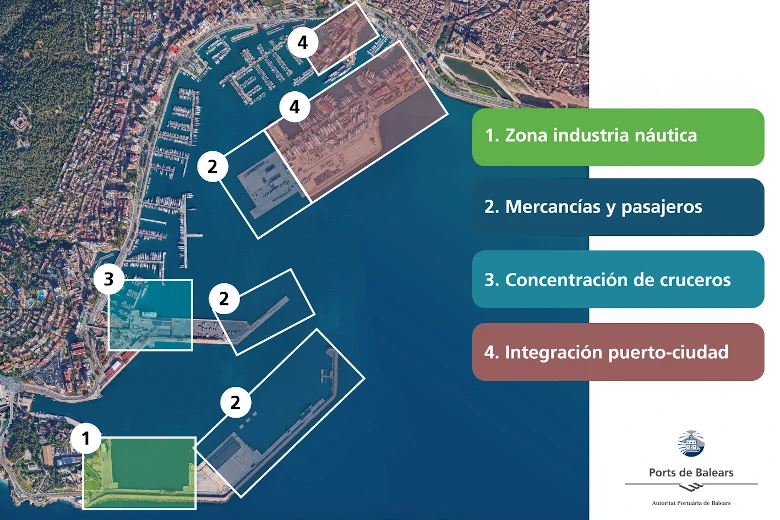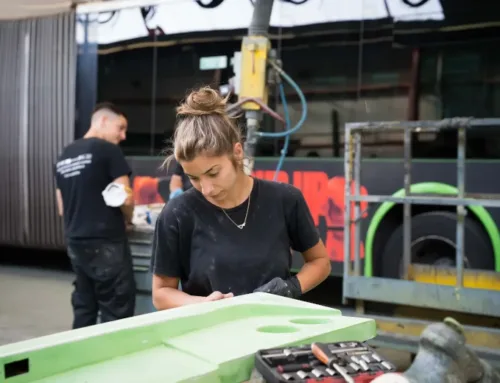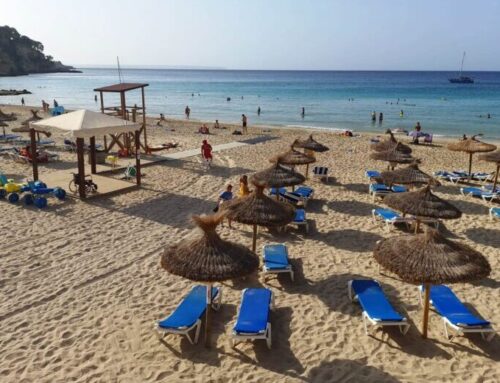SPECIAL CONTENT

Aerial image of the current port of Palma. Photo: Port Authority of the Balearic Islands.
The port of Palma, one of the main economic engines of the Balearic Islands, is at a key moment in its history. To adapt to the needs of the 21st century, the Board of Directors of the Balearic Islands Port Authority (APB) is reconfiguring its infrastructures and uses to achieve a balance between operational efficiency and sustainability. This reorganisation, the result of a wide-ranging participatory process, will ensure that the needs of all the groups involved are met. Its aim is to transform the port into a more dynamic, accessible space that is compatible with Palma’s urban and natural environment.
The current project is based on consultations with more than 65 representatives from the nautical, economic, social, and environmental sectors. Between June and October 2024, the APB organised meetings with associations, concessionary companies, official bodies, and political parties. Through these meetings, a consensus was reached on the general lines of the proposal, which was unanimously ratified.
Fundamental axes of the ‘new’ port of Palma

Map of the reconfiguration of the port of Palma. Source: APB.
The new configuration of the port is articulated around four main axes. The first is to maintain the simultaneity of port operations in the Commercial quays, the Poniente-Paraires quays, and the West dock. This will avoid congestion at peak times, especially during rush hours, and ensure that the embarkation and disembarkation of goods and passengers will not be affected.
The second axis relocates the space for cruise ships to the Poniente-Paraires quay. In parallel, the third axis moves the ship repair and maintenance areas to the West dock area and within the sheltered waters of the port. These relocations will be carried out gradually and in a manner compatible with the port operations taking place in each area.
Finally, and as an added value to the proposal, a project to integrate the port with the city is included. The spaces currently occupied by repair activities in front of the Cathedral and in the Contramuelle-Mollet will be dedicated to cultural, educational, and sporting uses. In this way, priority will be given to urban “sponging” by freeing up quality public spaces for the enjoyment of citizens.
A stroke of the helm
The original realignment plan, approved in 2020, generated controversy. Various groups, such as shipping companies and the repair sector, expressed their disagreement. They considered that the proposal did not meet their long-term needs.
Faced with this situation, the APB Board of Directors decided in June 2024 to abandon the original plan. Instead, it opened the door to a new proposal based on a broader consensus and adapted to the interests of all the actors involved. The current plan is the result of this collective effort, led by the president of the APB, Javier Sanz, which guarantees a solid basis for its implementation.
The next step will be to initiate the necessary procedures to detail the concrete actions. Additionally, public and private investments will be estimated, and economic and environmental studies will be carried out. All of this will ensure that the ‘new’ port of Palma is consolidated as an efficient, sustainable space that is fully integrated with the city.








Leave A Comment